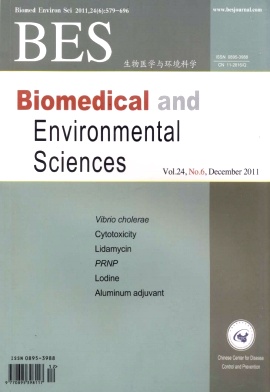Dietary Iodine Intake in the Chinese Population
doi: 10.3967/0895-3988.2011.06.005
-
Key words:
- Iodine /
- Exposure assessment /
- Drinking water Iodine /
- Dietary Iodine Intake
Abstract: Objective To evaluate dietary iodine intake and its potential risks among the Chinese population.Methods Individual dietary iodine intake was calculated using food consumption data multiplying by iodine concentration in foods,table salt and drinking water,followed by summing,and then compared with the corresponding age-specific reference values,including Upper Intake Level (UL) and Recommended Nutrient Intake (RNI).Results In areas with water iodine concentration (Wl) lower than 150 μg/L,80.8% of residents had iodine intake between the RNI and UL,5.8% higher than UL,and the remaining (13.4%) lower than RNI if iodized salt was consumed.However,in the uniodized salt consumption scenario,only 1.0% of residents between RNI and UL,1.4% higher than UL,and a large part of residents (97.6%) lower than RNI.In areas with Wl higher than 150 μtg/L,all residents had iodine intake between RNI and UL if iodized salt was consumed,except 10.5% and 24.9% of residents higher than UL in areas with Wl at 150-300 μg/L and higher than 300 μg/L respectively.However,in the uniodized salt consumption scenario,only 1.5% and 1.7% of residents had higher iodine intake than UL respectively.Conclusion The findings suggested that in general,the dietary iodine intake by the Chinese population was appropriate and safe at the present stage.People in areas with Wl lower than 150 μg/L were more likely to have iodine deficiency.While people in areas with Wl higher than 150 μg/L were more likely to have excessive iodine intake if iodized salt was consumed.
| Citation: | SUI Hai Xia, LI Jian Wen, MAO Wei Feng, ZHU Jiang Hui, HE Yu Na, SONG Xiao Yu, MA Ning, ZHANG Lei, LIU Sa Na, LIU Zhao Ping, LI Feng Qin. Dietary Iodine Intake in the Chinese Population[J]. Biomedical and Environmental Sciences, 2011, 24(6): 617-623. doi: 10.3967/0895-3988.2011.06.005 |







 Quick Links
Quick Links
 DownLoad:
DownLoad: